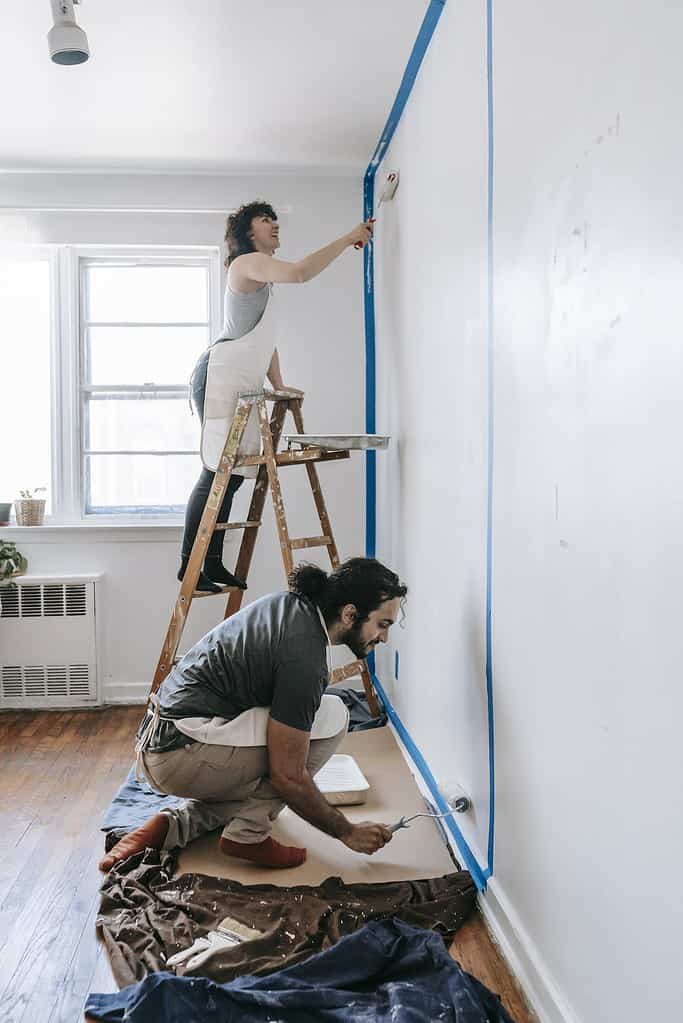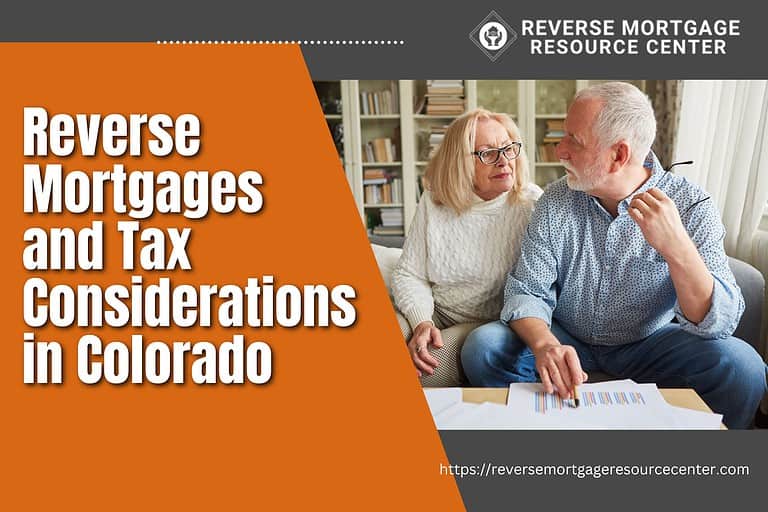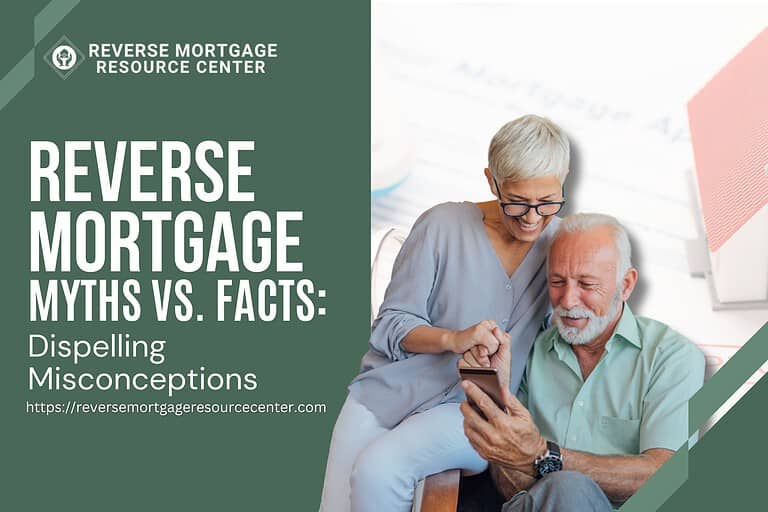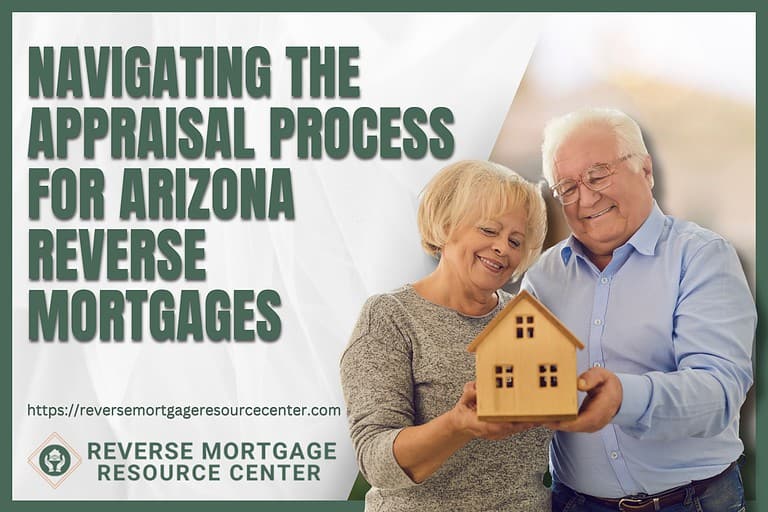How A Reverse Mortgage Loan Can Help You Fund Home Repairs
Reverse mortgage loans are becoming increasingly popular among homeowners looking for financial stability and help to manage their home-related obligations. These one-of-a-kind financial instruments enable eligible individuals to access a portion of the equity in their houses, giving them an additional source of funds that can be used for various purposes. One such aim is to support necessary house repairs and renovations that might otherwise be difficult on the homeowner’s limited financial resources. This article examines reverse mortgage loans, their possible benefits when used to finance home repairs, common types of renovations funded through this method, the application procedure, and potential drawbacks and considerations.
Homeowners with high home equity frequently experience difficulties maintaining and enhancing their residences while meeting other financial obligations. A reverse mortgage loan is a logical answer to this quandary since it allows these homeowners to turn a portion of their home equity into cash without selling or evacuating the property. This influx of funds can then be wisely targeted toward resolving critical home repairs and renovations that increase the property’s worth and ensure its inhabitants’ safety, comfort, and longevity. The following sections will delve into various aspects of reverse mortgage loans for house renovations and provide insights that may help homeowners make informed decisions about leveraging this option.
Understanding Reverse Mortgage Loans
Investigating the complexities of this financial instrument can shed light on its possible benefits for financing needed home upgrades. Reverse mortgage loans, also known as Home Equity Conversion Mortgages (HECMs), enable homeowners aged 62 and up to convert a portion of their home equity into cash while owning and occupying their house. This loan is intended to provide additional funds to seniors to augment their retirement income, cover unforeseen expenses, or fund other projects such as home repairs.
In various respects, reverse mortgage loans differ from standard mortgages. To begin with, there are no monthly payments; instead, the loan total grows over time and becomes payable when the homeowner sells the property, moves out permanently, or passes away. The borrower’s age, current interest rates, and appraised property worth determine the amount that can be borrowed.
When faced with pricey maintenance difficulties that could affect the quality of life or future resale value, one might consider using a reverse mortgage loan expressly for paying for house repairs. Repairing structural damage caused by water infiltration or termites, replacing aging HVAC systems to enhance energy efficiency and comfort levels within the home, or upgrading critical safety elements such as electrical wiring and fire alarms are some examples. Instead of relying on personal savings or other forms of credit to finance these necessary repairs, homeowners can preserve financial security while improving their living environment and investment in real estate over time by leveraging existing home equity through a reverse mortgage loan.
Benefits of Using a Reverse Mortgage Loan for Home Repairs
Using a financial approach that leverages one’s home equity can give significant benefits for tackling necessary maintenance and renovation tasks. A reverse mortgage loan, intended exclusively for homeowners aged 62 and up, allows borrowers to turn a portion of their home equity into tax-free income without selling the house, giving up the title, or taking on new monthly mortgage payments. This financial instrument allows seniors to retain their quality of life while aging in place and keeping their homes in good condition.
- No Monthly Payments: The absence of necessary monthly payments is a significant advantage of using a reverse mortgage loan for home renovations. The loan balance is repaid when the homeowner sells the property, moves out permanently, or passes away.
- Tax-Free Funds: The Internal Revenue Service (IRS) does not consider reverse mortgage proceeds taxable income. This means homeowners can spend these monies for needed repairs without fear of additional tax liability.
- Increased Home Value: Addressing neglected maintenance concerns and making renovations increases the aesthetic appeal and the overall worth of one’s property. As a result, investing in house renovations with a reverse mortgage ultimately contributes to higher resale value.
- Flexible Disbursement Options: Reverse mortgages provide a variety of disbursement choices to meet individual needs, including lump sum payments, lines of credit, and term or tenure-based monthly payouts.
The advantages listed above demonstrate that using a reverse mortgage loan can be an excellent alternative for paying necessary home renovations while keeping financial security throughout retirement years. This method allows seniors to protect their hard-earned assets and ensures that they can continue to live comfortably in familiar surroundings, with peace of mind knowing that their homes are well-maintained and secure investments for themselves and future generations.

Common Home Repairs and Improvements Funded by Reverse Mortgages
Roof repairs, accessibility enhancements, and energy-efficient renovations are three types of property repairs and improvements commonly covered through reverse mortgages. Reverse mortgage loans can be used to finance home roof maintenance, giving homeowners financial stability while maintaining the longevity of their homes. Furthermore, these loans can help homeowners improve their accessibility and encourage investments in energy-saving technologies that cut utility bills and contribute to environmental sustainability.
Roof Repairs
Addressing essential roof repairs is important in maintaining a property’s structural integrity and value. If left unchecked, roof damage can lead to more major issues, such as water intrusion and energy inefficiency, with costly long-term consequences. A reverse mortgage loan can assist homeowners in funding these necessary repairs without needing monthly payments or depleting their savings. Borrowers can ensure that their houses stay safe and habitable while keeping their financial stability by turning a portion of their home equity into cash specially intended for home improvements.
Several important variables contribute to the need for roof repairs, which a reverse mortgage loan may cover:
- Age: In general, roofs have an average lifespan of 20-30 years; after that, they become more prone to damage and deterioration.
- Weather-related damage: Severe storms, hail, or high winds can cause extensive damage to roofing materials.
- Poor installation or maintenance: Leaks, rotting wood, and other structural difficulties might result from improper installation practices or a lack of regular maintenance.
- Material quality: Lower-quality materials may not provide enough weather protection over time.
Addressing these concerns is critical for homeowners who wish to protect their property and financial investment. Using a reverse mortgage loan guarantees that they have the means necessary to carry out critical roof repairs without jeopardizing other aspects of their lives—satisfying a subconscious yearning for power over one’s living environment while being financially comfortable throughout retirement years.
Accessibility Improvements
Improving a property’s accessibility to ensure their living environment stays comfortable and safe is another important consideration for homeowners, especially as they age or have mobility difficulties. Widening doorways and corridors, building ramps or stairlifts, adapting bathrooms to enable grab bars and walk-in tubs, and increasing kitchen countertop heights are all accessibility improvements. These modifications increase safety and help people with physical disabilities or impairments keep their independence and quality of life.
A reverse mortgage loan can effectively finance these crucial accessibility upgrades without putting further financial strain on homeowners. This loan enables qualifying homeowners aged 62 and above to convert a portion of their home equity into tax-free funds that can be utilized for any purpose, including home improvements. Repayment is postponed until the homeowner sells the house, moves out permanently, or passes away, offering peace of mind while meeting urgent accessibility needs. Furthermore, because the government regulates reverse mortgage loans through the Federal Housing Administration (FHA), borrowers can be certain that certain consumer safeguards are in place. Overall, combining accessibility improvements with reverse mortgage funding provides both practical benefits in terms of improved usefulness and safety within the home environment and financial relief for those who would otherwise be unable to afford these necessary renovations.
Energy-Efficient Upgrades
Increasing the environmental efficacy of a home through energy-efficient renovations provides both environmental advantages and long-term economic savings for homeowners. Such upgrades include:
- Installing high-efficiency heating and cooling systems
- Updating insulation
- Adding solar panels
- Replacing old appliances with Energy Star-certified ones
These changes help reduce greenhouse gas emissions and reliance on nonrenewable energy sources while cutting power bills by reducing wasted energy consumption. Furthermore, government programs and tax breaks are frequently available to encourage homeowners to participate in environmentally friendly renovations, making these projects more financially feasible.
A reverse mortgage loan can effectively finance energy-efficient upgrades without increasing monthly payments. Homeowners can address their sustainability goals at a pace corresponding to their financial comfort level by tapping into their home’s equity and transforming it into accessible finances. As a result of this method, the homeowner increases the value of their home and creates an environmentally conscious living area that promotes responsible resource use for future generations. Using a reverse mortgage loan to finance eco-friendly home upgrades allows consumers to actively contribute to climate change mitigation while reaping significant financial rewards.
How to Apply for a Reverse Mortgage Loan
Navigating the application process for this financial solution can be critical in obtaining the funds needed to address housing maintenance issues. A reverse mortgage loan can provide vital financial resources for necessary home repairs and improvements. To apply for a reverse mortgage loan, potential borrowers must first evaluate eligibility criteria, meet with an approved counselor, choose a lender, and acquire a property evaluation.
Knowing your qualifying requirements is critical in applying for a reverse mortgage loan. Borrowers must be at least 62 years old, use the property as a primary residence (single-family homes, approved condominium units, or manufactured homes), have sufficient property equity, and maintain property taxes and insurance payments throughout the loan period. Furthermore, any existing mortgage on the property must be paid off before or with the reverse mortgage proceeds.
After establishing eligibility for this financing option, potential borrowers must receive mandatory counseling offered by an independent third party certified by HUD (U.S. Department of Housing and Urban Development). This workshop aims to ensure that homeowners understand all aspects of reverse mortgages, including costs, repayment methods, and potential alternatives.
After successfully completing counseling sessions, candidates should seek a trustworthy lender that offers competitive interest rates and suitable terms and circumstances. Once a suitable lender has been found, you must arrange for an FHA-approved appraiser to estimate the current worth of your house; this appraisal is used to determine how much you may get from your reverse mortgage loan.
By carefully following these steps – evaluating eligibility criteria, attending mandatory counseling sessions, identifying preferred lenders, and obtaining accurate property appraisals – applicants have a better chance of securing funding through reverse mortgages, allowing them to make necessary home repairs while maintaining ownership rights over their properties. This funding option enables senior homeowners to retain the value and usability of their homes, ensuring long-term security and peace of mind.

Potential Drawbacks and Considerations
While reverse mortgage loans are a feasible alternative for funding necessary home renovations, weighing the benefits and drawbacks before committing to this financial choice is critical. The cost of obtaining a reverse mortgage loan is an important issue. Borrowers must pay various expenses, including loan origination, servicing, insurance premiums, and closing costs. These costs can be high and, if not carefully considered, may outweigh the benefits of getting financing for house repairs. Furthermore, while reverse mortgage loans allow homeowners to tap into their home equity without selling or moving out, the eventual repayment of the loan can diminish the amount of inheritance passed down to heirs.
Another thing to remember while looking at reverse mortgage loans is that they are only available to homeowners with certain age restrictions (usually 62 years or older). This limits the pool of eligible borrowers and may not be a viable option for younger homeowners needing financing for urgent repairs. Furthermore, retaining primary residence status in the loan property is an ongoing requirement, which implies that borrowers must continue living in their homes even after receiving reverse mortgage loan funds; otherwise, they risk triggering repayment obligations.
Considering these potential downsides and limits, reverse mortgage loans are still an effective way of financing crucial home repair tasks. Prospective borrowers should, however, assess these factors against their specific circumstances before making any judgments about this financial product. Thorough study and consultation with skilled professionals can assist consumers in making well-informed decisions about whether a reverse mortgage loan is appropriate for addressing their home repair needs while retaining long-term financial stability and peace of mind.
Frequently Asked Questions
Are there any restrictions on the specific types of home repairs or improvements that can be funded by a reverse mortgage loan?
As one’s golden years come to an end, the home that once stood firm and sturdy may exhibit wear and tear symptoms, needing necessary repairs or changes. In such cases, understanding the financial tools accessible to homeowners requesting aid is critical. While reverse mortgage loans can be used to support a variety of home improvements, there are certain limitations.
These restrictions often apply to ensure that the financed projects are required to maintain or improve the residence’s structural integrity, safety measures, or overall livability. As a result, before embarking on any home repair journey with a reverse mortgage loan, persons choosing this road should properly assess their circumstances according to existing legislation and norms.
What are the qualifications for a homeowner to be eligible for a reverse mortgage loan for home repairs?
Homeowners must meet particular criteria to be eligible for a reverse mortgage loan for home repairs:
- The homeowner must be at least 62 years old and use the property as their principal residence.
- The property must have sufficient equity. Borrowers must pay their property taxes and insurance on schedule and maintain the property in accordance with Federal Housing Administration (FHA) guidelines.
- Lenders will conduct a financial evaluation on potential borrowers to determine their ability to afford recurring expenses associated with homeownership.
While reverse mortgage loans can provide funding for necessary home repairs or improvements without the borrower making monthly payments during their lifetime, they may impact eligibility for needs-based government assistance programs and result in less inheritance for heirs upon loan repayment after the homeowner’s death.
How does the loan repayment process work after the homeowner passes away or moves out of the home?
After passing away or moving out of their primary residence, homeowners may find peace in the debt repayment procedure of a reverse mortgage. When this point is reached, the loan is declared due and payable (usually within six months). It can be paid off by selling or refinancing the property with another available financial resource. The proceeds of such a transaction are initially used to pay off the reverse mortgage’s outstanding balance, including any accrued interest and fees. Following that, any remaining equity reverts to the estate or designated heirs, who can determine how to distribute these assets in accordance with the deceased wishes or legal obligations. As a result, this meticulously planned approach guarantees that responsibilities are promptly satisfied while preserving the homeowner’s legacy and familial interests.
Are there any tax implications or consequences associated with using a reverse mortgage loan for home repairs?
The tax implications and repercussions of using a reverse mortgage loan for home renovations should be carefully considered. The Internal Revenue Service (IRS) normally does not consider reverse mortgage proceeds taxable income since they are categorized as loan advances rather than normal income. As a result, the borrower’s eligibility for federal or state assistance programs such as Social Security or Medicare is usually unaffected.
Furthermore, the interest on the reverse mortgage is not usually tax-deductible until the loan is fully repaid. Because tax rules and regulations differ based on individual circumstances and location, it is strongly advised to contact a professional financial counselor or tax specialist before considering using a reverse mortgage loan for house renovations.
Can a reverse mortgage loan be refinanced or combined with other loans, such as a traditional mortgage or home equity loan?
While navigating the complex landscape of financial possibilities, one may come across the idea of refinancing or combining several loans, such as reverse mortgages, standard mortgages, or home equity loans. Under some conditions, it is possible to refinance a reverse mortgage loan to obtain more favorable terms or access extra money; however, this process is subject to specific rules and requirements imposed by the lender and the Federal Housing Administration (FHA). Combining a reverse mortgage with other types of loans, on the other hand, may be difficult due to the specific structure and constraints associated with reverse mortgages. Navigating these complex possibilities necessitates carefully analyzing each individual’s financial condition and long-term goals to establish the best course of action for reaching financial mastery.
REVERSE MORTGAGE RESOURCE CENTER ~LIVE LIFE ON YOUR TERMS~
Our Lending Team has been serving our clients since 2004. We are passionate about serving our clients with integrity to help them achieve their financial goals.







